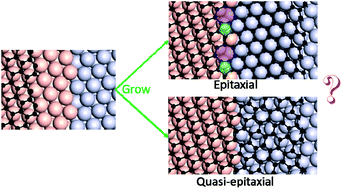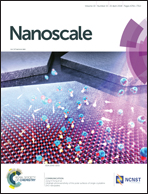How graphene crosses a grain boundary on the catalyst surface during chemical vapour deposition growth†
Abstract
The chemical vapour deposition (CVD) growth of graphene is normally an epitaxial process, where the atomic structure of the adlayer should copy the texture of the substrate. However, it has been widely observed that single crystalline graphene grown on metal foil may cross a grain boundary (GB) of the substrate without forming any line defect, a necessary condition to change its crystalline orientation and maintain the structure registry with the substrate on the other side of the GB. Here, we present a comprehensive theoretical study on graphene growth behavior on polycrystalline metal substrates. Our density functional theory (DFT) calculations reveal that for graphene growth on most metal surfaces, the binding energy difference between the epitaxial and non-epitaxial graphene on the substrate is not large enough to compensate for the formation energy of a GB in graphene and therefore, during the CVD process, the growing graphene can pass through a GB on the metal surface without changing its crystalline orientation. Hence, graphene CVD growth cannot be strictly regarded as an epitaxial process; this conclusion is further verified by atomic simulations. The present study shows that the growth of graphene on a metal catalyst surface should be regarded rather as a quasi-epitaxial process, where a graphene domain is aligned only on the single crystalline metal facet on which it nucleates, but this structural registry with the metal substrate may be lost when the graphene crosses a GB on the metal surface.



 Please wait while we load your content...
Please wait while we load your content...